
In today's summary:
- The Armed Forces of Ukraine (AFU) have reportedly landed on the left bank of the Dnipro River near the village of Kozachi Laheri;
- A detachment of the Russian military headed by Major Tomov was “lost” in the landing area;
- Ukrainian servicemen have reportedly “dealt” with mine barriers near the village of Urozhaine on the Vremyevsky Bulge;
- The Russian army’s offensive in the Kupiansk direction continues — Novoselivske has been captured yet again;
- Seven people were killed and 88 wounded in a strike on Pokrovsk in the Donetsk Region;
- A Russian Ka-52 attack helicopter was downed in the combat zone in circumstances that remain uncertain;
- A batch of American Abrams M1A1 tanks have been confirmed for delivery to Ukraine in early fall;
- Ukrainian aircraft capable of carrying Western cruise missiles are being relocated between airfields every 24 hours.
The front line
Vladimir Saldo, the Russia-installed “governor” of the Kherson Region, reported a landing attempt by Ukrainians on the left bank of the Dnipro River near the village of Kozachi Laheri. According to Saldo, the attempt was foiled and the landing force was completely destroyed.
Russian “war correspondents” (1, 2, 3) reported that Ukrainian units landed and entrenched themselves on the outskirts of the settlement, creating conditions for setting up a crossing for heavy equipment. The sources added that mobilized soldiers are currently manning the first line of Russian defense in this area following the transfer of airborne troops (VDV) to the Zaporizhzhia direction.
The Russian pro-war channel Rybar linked the AFU landing with Russia’s withdrawal of its airborne units along with the “inexperience and ignorance of the situation of the arriving [military servicemen — The Insider].”
A team of 16 Russian reconnaissance personnel led by Major Tomov was tasked with assessing the situation. However, it seems improbable that they will provide any updates, as communication with the group has been severed, and they have not reached the designated checkpoint. This situation brings to mind David Bowie's song Space Oddity, which includes verses about a missing major (albeit named Tom, not Tomov).
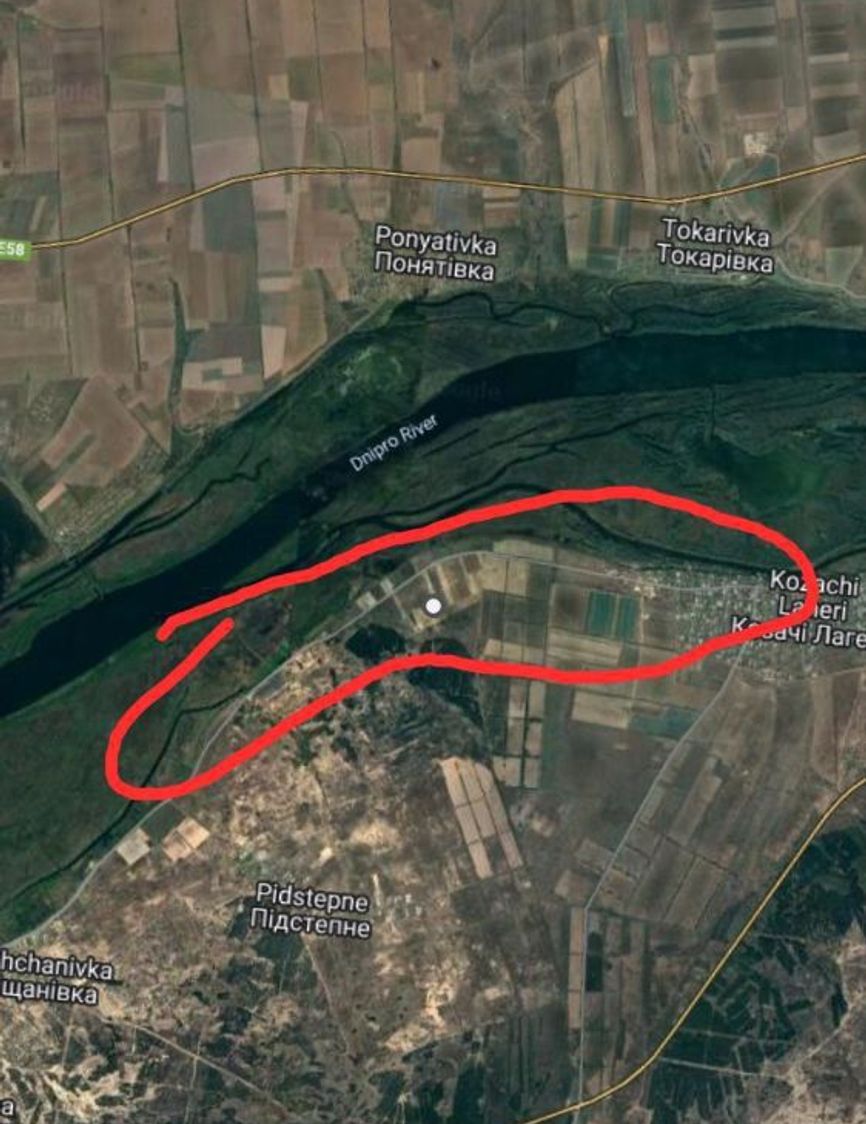
The site of Major Tomov's disappearance
On August 9, Ukraine’s Deputy Defense Minister Hanna Maliar said the military has “not confirmed»”reports that Ukrainian forces conducted a raid on the occupied east bank of the Dnipro River in the Kherson Region. “The original source of this information was the Russians. And then this information was spread,” Maliar said in a televised interview. “These are the laws of social media development, nothing can be stopped. But as of now, the General Staff has not confirmed it,” she added.
According to a report from the Russian pro-war outlet WarGonzo, the Russian military has achieved tactical victories to the northeast of Robotyne, effectively eliminating the risk of a breach along the Robotyne — Verbove line. However, Rybar's account does not mention any instances of Russian forces launching offensive operations. Instead, it focuses on detailing the repulsion of Ukrainian assaults along the Robotyne — Verbove line and the ongoing clashes within Robotyne itself.
Alexander Khodakovsky reported on the situation in Urozhaine on the Vremevsky Bulge (the conventional name of the operational area at the junction of the Zaporizhzhia region and the so-called “DPR” south of Velyka Novosilka). According to him, Ukrainian troops have “dealt” with mine barriers and are trying to gain a foothold on the northern outskirts of the settlement. According to Rybar, there is “almost nothing” left of Urozhaine, as well as of the neighboring village of Staromaiorske.
Rybar noted new attacks by the AFU in the Bakhmut direction, which began after several days of a relatively “stable” situation. They are conducted by infantry groups supported by artillery and tanks. According to the channel's authors, “most of the attacks have been repelled,” but “strongpoints are changing hands.”
The Russian army's offensive in the Kupiansk direction is ongoing. According to Rybar's account, the Russian military has successfully dislodged the AFU from “several fortified positions.” There are reports of the Russian forces taking control of positions within the woodland area to the south of Olshan and Pervomaiske. Additionally, there has been a deployment of extra AFU units towards the Kupiansk direction.
According to the Ukrainian open source intelligence (OSINT) project DeepState, Russian military units have regained control over Novoselivske in the Luhansk Region — a settlement which has been almost completely destroyed. Heavy fighting also continues near other nearby settlements. A Ukrainian military officer stationed in this sector was quoted as saying that the enemy has deployed a significant number of assault troops to the Kupiansk direction, but is suffering heavy losses as it pushes forward.

Shelling and sabotage
The Ukraine-controlled town of Pokrovsk in the Donetsk Region was attacked, with two missiles impacting a residential apartment building and the neighboring Druzhba hotel. Eighty-eight people were injured, including four military personnel, according to a report by the Donetsk Regional Military Administration (OVA). Seven people were killed, including the Deputy Head of the Regional Directorate of the State Emergency Service of Ukraine (DSNS). Pokrovsk is notably located about 40 kilometers away from the frontline.
According to a statement by Pavlo Kyrylenko, the head of Donetsk OVA, the Russian military has once again employed the double-tap tactic, which involves launching a second attack on the same location after emergency services have already arrived following the initial strike. This tactic has reportedly been previously used by the Russian Armed Forces and President Bashar al-Assad's regime in Syria, as noted by multiple human rights activists.
The Russian Defense Ministry claimed that the attack on Krasnoarmeysk (Pokrovsk’s previous name until the 2016 decommunization campaign, meaning “Red Army”) targeted the command post of the “Khortitsya” grouping of troops. However, Serhiy Cherevatyi, spokesperson for Ukraine's Eastern grouping of troops, denied the claims in a comment to Ukrainska Pravda. Cherevatyi labeled the claims “false Russian propaganda.” “This is the third or fourth time they’ve 'destroyed' this command post. Russian terrorists continue to target innocent civilians,” he added.
Losses
Oleksandr Tarnavskyi, commander of Ukraine’s Tavria operational-strategic group, reported that servicemen of the 47th Brigade shot down a Russian Ka-52 attack helicopter using man-portable air defense systems (MANPADS) near Robotyne.
The main Telegram channels related to the Russian Aerospace Forces (Fighterbomber) and Russian Army Aviation units (Helicopterpilot) confirmed the loss of the helicopter.
However, as per Helicopterpilot's account, the event occurred in the Kharkiv/Kupiansk direction, and a Buk surface-to-air missile (SAM) system, rather than MANPADS, was used to bring it down.
Russian military blogger Kirill Fedorov shared an image of a navigator belonging to the deceased helicopter crew.
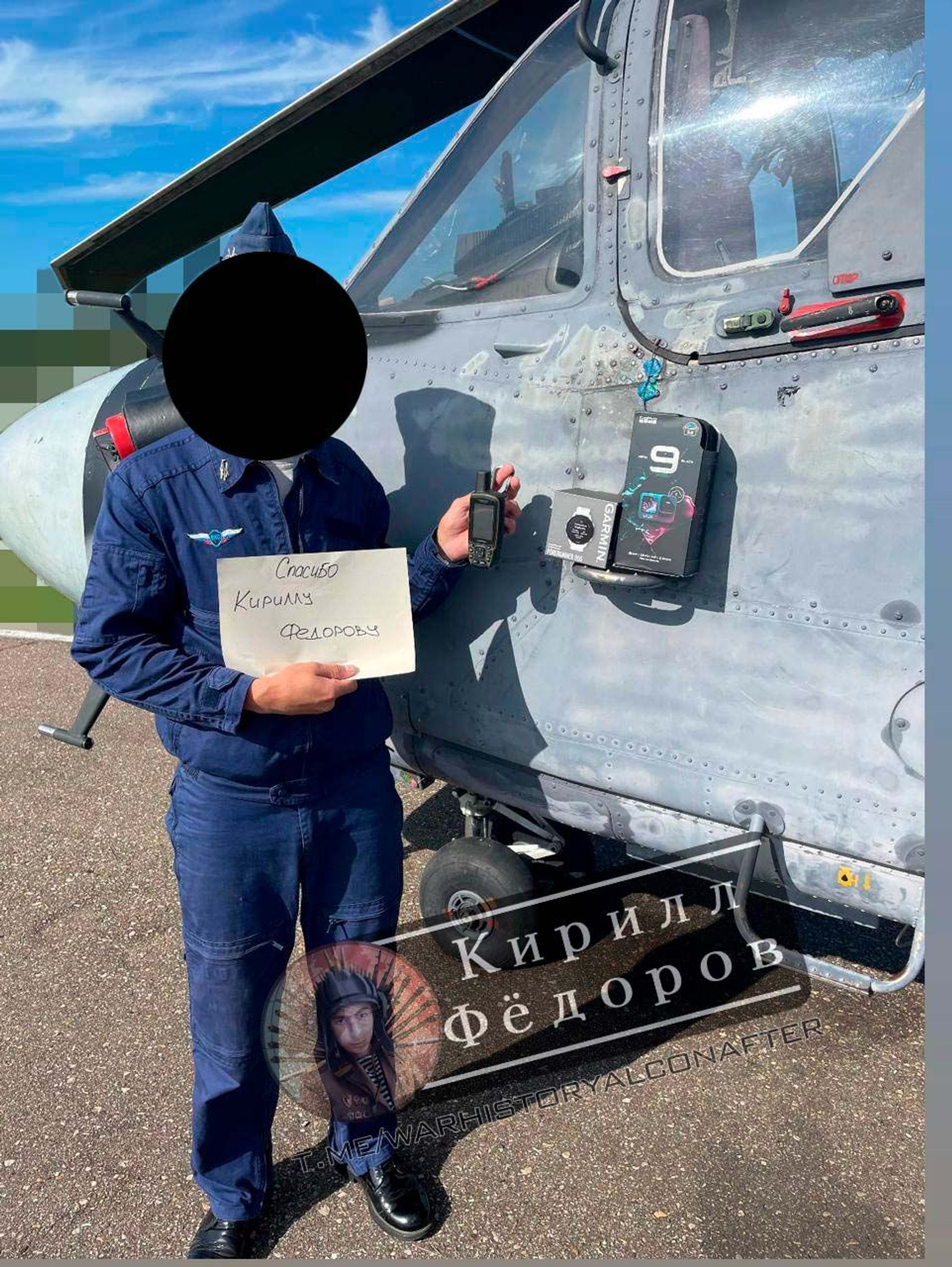
The large landing ship Olenegorsky Gornyak, damaged by a maritime drone attack on August 4, was moved to a dock in Russia’s Novorossiysk port for repairs, as evidenced by satellite images published on social media.
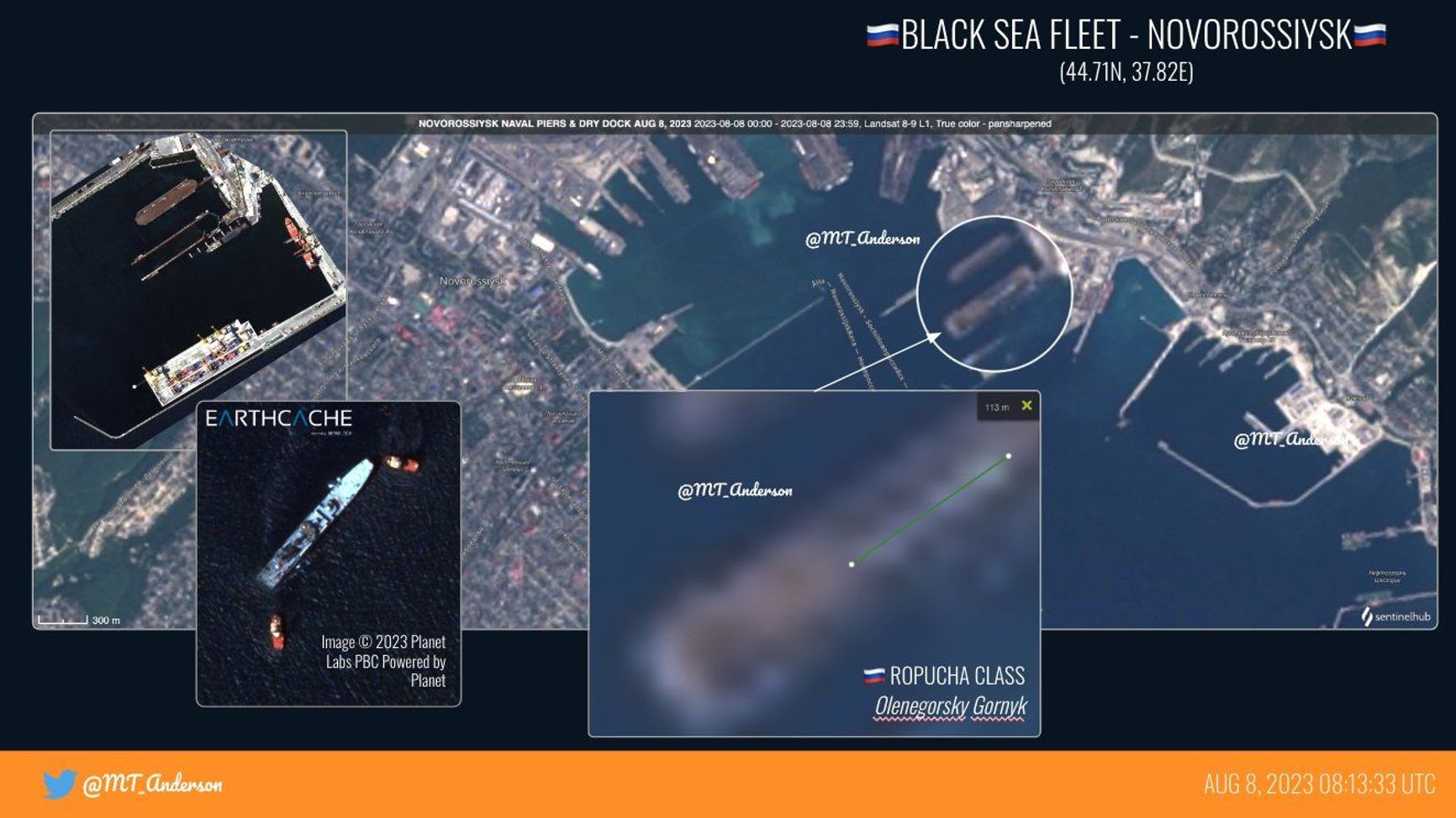
In turn, Ukrainian President Volodymyr Zelensky threatened to leave Russia without any ships in the Black Sea if it continued its naval blockade.
Graphic footage has emerged showing the evacuation of AFU servicemen from a burning Bradley infantry fighting vehicle (IFV), whose ramp jammed. One of the servicemen's legs were torn off, and the second also suffered severe burns and leg injuries.
Arms supplies
A group of 31 American Abrams M1A1 tanks has been given the green light for delivery to Ukraine, according to a CNN report citing US Army Acquisition Chief Doug Bush. These tanks are fully ready for battle, but the Pentagon insists on sending Ukraine ammunition and spare parts, along with creating facilities for their repair. The tanks are expected to be handed over to the Ukrainian military in early fall.
According to the Belgian newspaper De Standaard, an “unknown party” bought 50 Leopard 1A5(BE) tanks from the Belgian company OIP Land Systems, which were earlier decommissioned by the Belgian army. They are now being sent for repairs. Earlier reports mentioned that the Belgian authorities were going to buy these tanks, but the company did not want to sell them at the price offered by the government. As the German newspaper Handelsblatt later clarified, the tanks were bought by the Rheinmetall concern, which will upgrade them for later delivery to Ukraine.
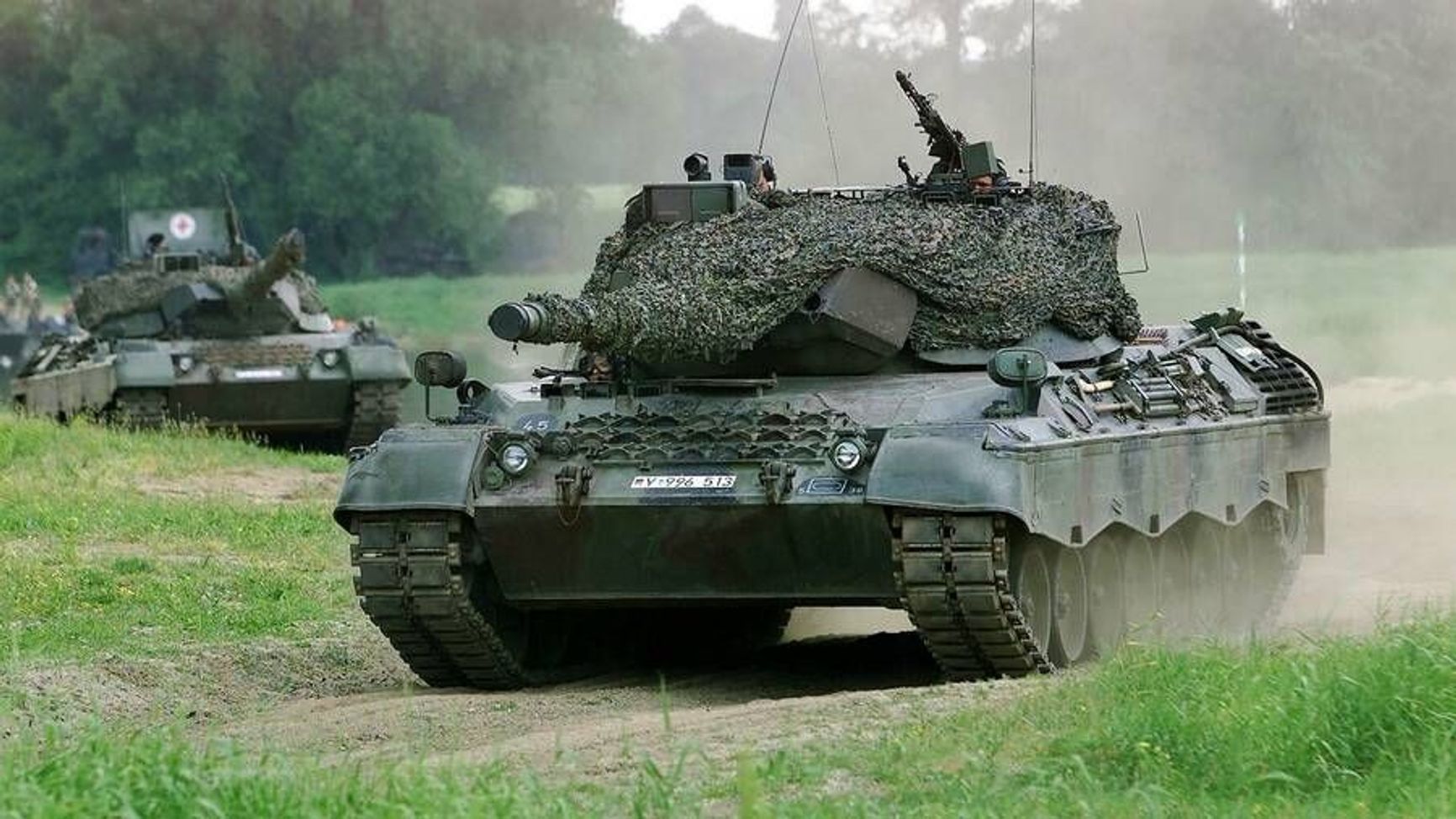
The Leopard 1A5
According to Ukraine’s Minister for Strategic Industries Oleksandr Kamyshin, the production of Stuhna-P anti-tank guided missiles (ATGMs) has quadrupled compared to January this year. It is stated that there are plans to export Stuhna ATGMS in the future.
The Stuhna-P was likely already planned for export, with the plan being interrupted by Russia’s full-scale invasion in February 2022. In the initial stages of active fighting, videos of the Ukrainian military employing these ATGMs were shared on social media. These videos showed an operator’s interface in Arabic, suggesting they were being readied for export but were then given to the AFU instead. The Stuhna-P compares favorably to its Russian equivalents due to its factory remote control feature, which permits the operator to stay in cover while firing the missile. In 2023, Russian “volunteers” began copying the system — reportedly without the involvement of ATGM manufacturers or Defense Ministry officials.
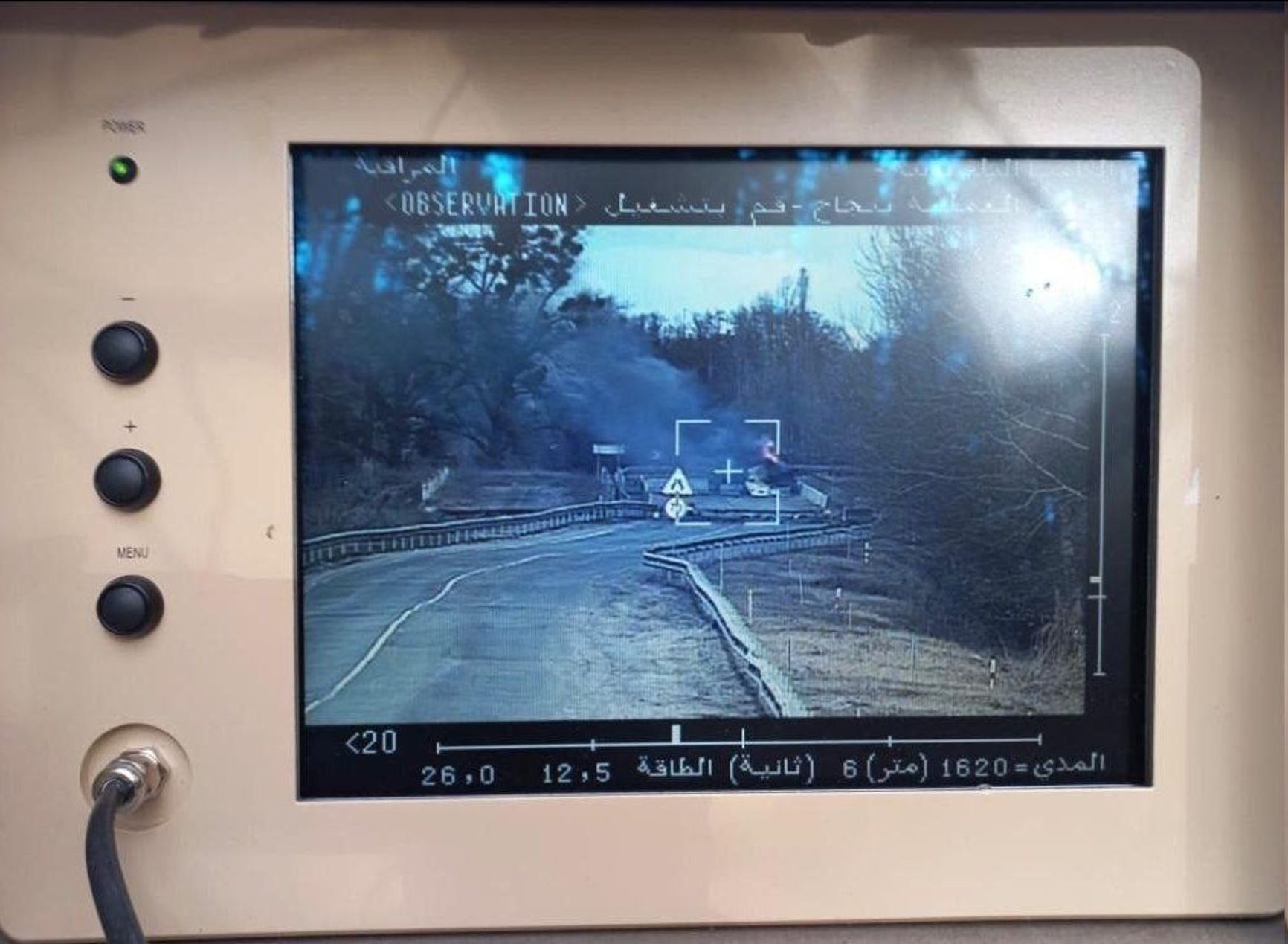
Export versions of the Stuhna-P with an operator’s interface in Arabic
Ukrainian Su-24 frontline bombers, which have the capability to carry Storm Shadow cruise missiles, are being relocated between airfields every 24 hours. Due to Ukraine's limited aircraft inventory and the absence of imminent Western deliveries, the AFU are taking extensive measures to safeguard their existing assets. To achieve this, they have restored and fortified older airfields while employing modern air defense systems like the Patriot and IRIS-T Surface-to-Air Missiles (SAMs) to defend them.
Based on satellite images, The Moscow Times has calculated that over 40% of tanks and armored personnel carriers (APCs) have been removed from Vagzhanovo, Russia’s largest known military vehicle storage base in the Republic of Buryatia in Russia’s Far East. This applies specifically to the fourth and worst storage category, which involves open-air storage. Approximately half of the armored vehicles at the site either lacked turrets or displayed visible defects. In a previous assessment made in April of this year, the YouTube channel Covert Cabal estimated, based on satellite imagery, that Russia had pulled around 1,500 tanks out of storage since the conflict's outset, while roughly 3,900 remained in storage at that time.
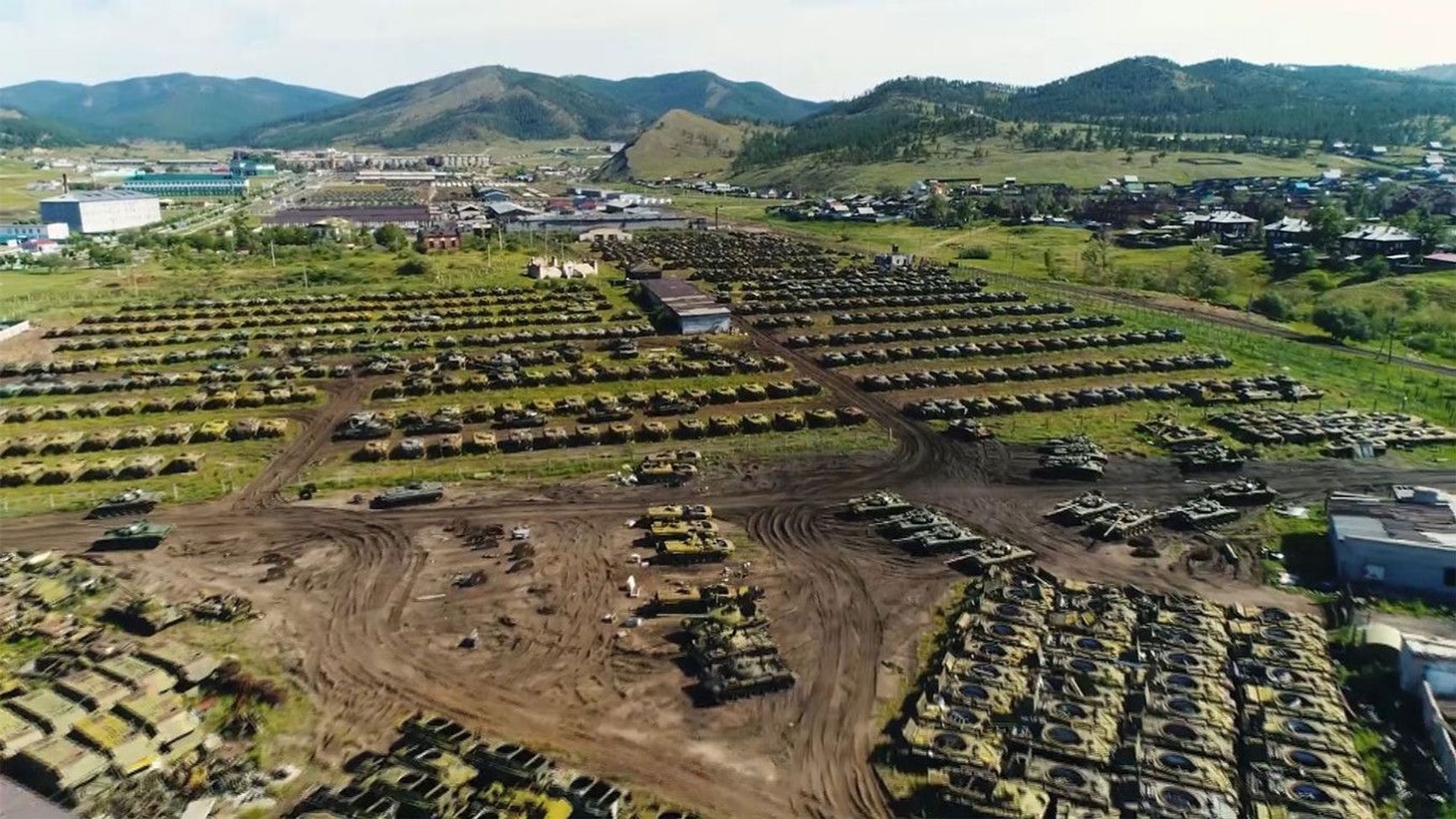
Russia's Vagzhanovo military vehicle storage base in Buryatia
Russian military personnel on the frontline often report that the de-mothballed pieces of equipment that are delivered to the front lines are in a non-operational state. For example, in July, they complained about the arrival of Nona-S self-propelled mortars, with the turret marked “Do not touch — 2 cat[egory],” along with faulty Tunguska anti-aircraft missile and gun systems. Reports have revealed that equipment taken from storage is directly moved to the frontlines, where repair units work on fixing it, even in the midst of ongoing enemy attacks.
Remarkable footage of equipment repairs has been published by the Polish defense company PGZ. The images feature members of the PGZ Serwis Orel subsidiary, which was established in May this year, conducting repairs on Leopard 2A4 tanks and Krab self-propelled howitzers in the field in Ukraine.